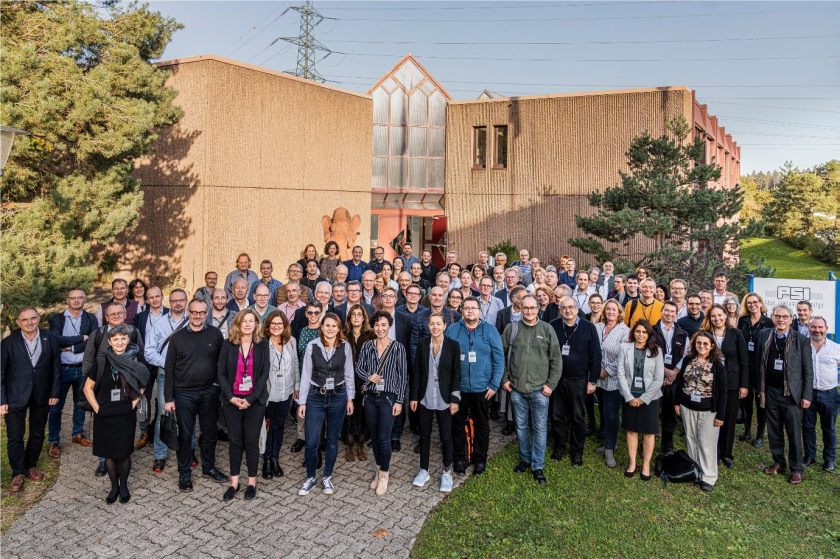LEAPS research infrastructures to tackle societal crises

More than 180 scientists, research facilities directors, policymakers and industry representatives travelled to Paul Scherrer Institute from across Europe to attend the LEAPS Plenary Meeting. © Markus Fischer/PSI
Against a backdrop of the energy crisis, scientists and policymakers convened at Paul Scherrer Institute PSI in Switzerland and set out a vision for European accelerator based photon sources to address current and future societal challenges together.
“LEAPS facilities find themselves in a unique position of simultaneously needing to adapt as heavy energy users whilst being an integral part of the solution.” So said Leonid Rivkin from the Paul Scherrer Institute PSI, Switzerland, Chair of the League of European Accelerator-based Photon Sources (LEAPS). Speaking at the 5th LEAPS plenary meeting, Rivkin commented that planned facility upgrades to leading European research infrastructures will help favourably shift the balance, providing more X-rays for more science with less energy consumption.
The current energy crisis was an important theme during the 5th LEAPS plenary meeting, held at the Paul Scherrer Institute from the 26th – 28th October 2022. The meeting welcomed more than 180 scientists, policy makers and industry representatives from across Europe. This included directors of the 19 member European accelerator-based photon facilities – i.e. synchrotron light sources and free electron lasers (FELs) - as well as high-level representatives of the European Commission.
read more >
PSI
https://www.helmholtz-berlin.de/pubbin/news_seite?nid=24187;sprache=en
- Copy link
-
Research up close! The Long Night of Science at HZB
On 28 June, it's that time again: the Long Night of Science will take place from 5 pm to midnight in Berlin and also in Adlershof! Come around and take a look behind the scenes of our exciting research.
-
HZB and National University Kyiv-Mohyla Academy start cooperation in Energy and Climate
Helmholtz-Zentrum Berlin für Materialien und Energie GmbH (HZB) and the National University of "Kyiv-Mohyla Academy" (NaUKMA) have signed a Memorandum of Understanding (MoU). The MoU serves as the starting point for collaborative research, academic exchange, and capacity-building between the two institutions. Actions will be taken to establish the Joint Research and Policy Laboratory at NaUKMA in Kyiv. The aim of the future laboratory is to jointly develop research and policy analysis, focusing on the energy and climate dimensions of Ukraine’s EU integration.
-
MAX IV and BESSY II initiate new collaboration to advance materials science
Swedish national synchrotron laboratory MAX IV and Helmholtz-Zentrum Berlin (HZB) with BESSY II light source jointly announce the signing of a 5-year Cooperation Agreement. The new agreement establishes a framework to strengthen cooperation for operational and technological development in the highlighted fields of accelerator research and development, beamlines and optics, endstations and sample environments as well as digitalisation and data science.
